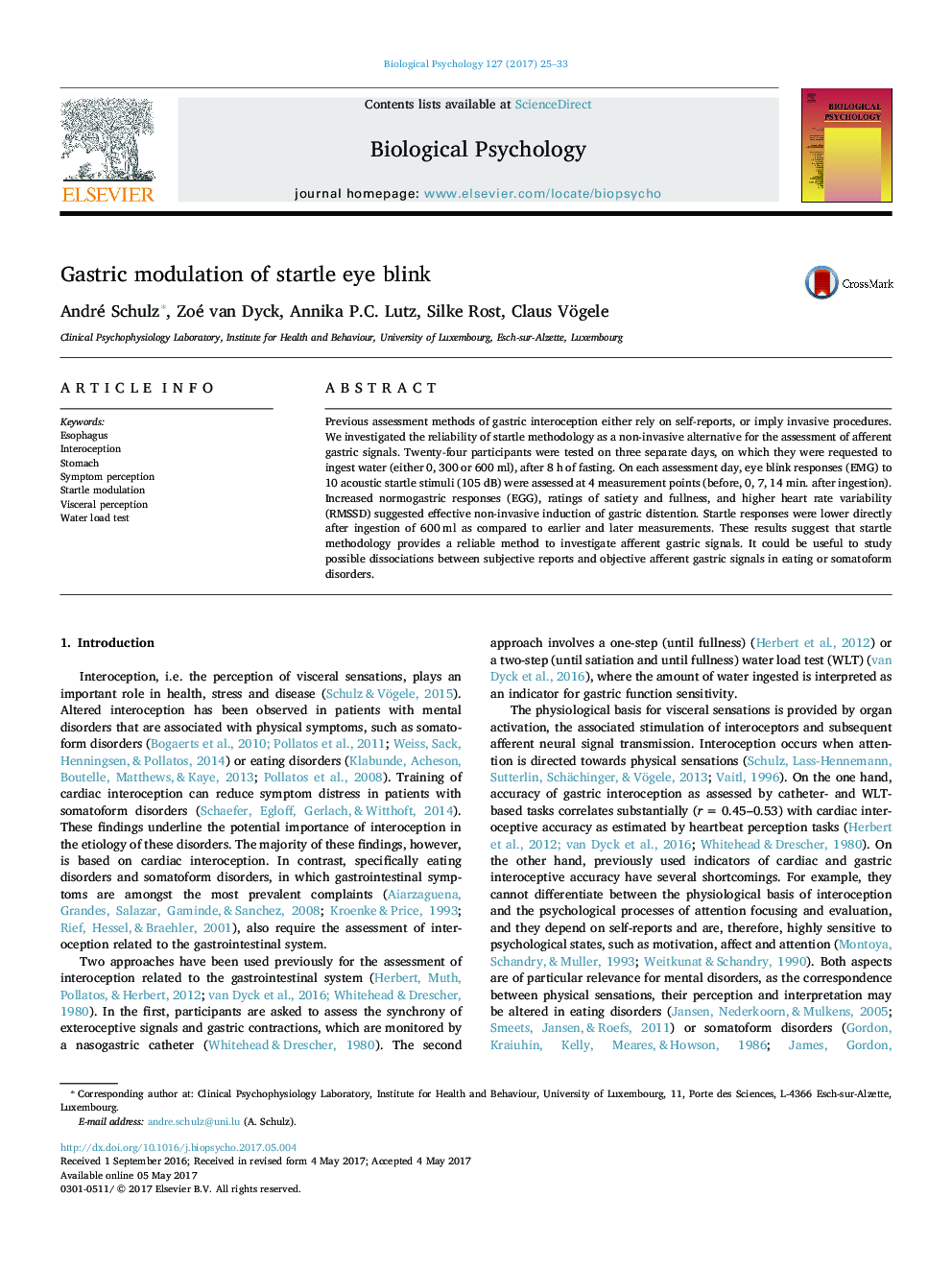| Article ID | Journal | Published Year | Pages | File Type |
|---|---|---|---|---|
| 5040474 | Biological Psychology | 2017 | 9 Pages |
â¢We investigated if startle methodology is feasible to assess afferent gastric signals.â¢Ratings, EGG and increase of RMSSD suggest effective gastric distension.â¢Startle responses were higher directly after a water ingestion of 600 ml (vs. 0 ml).â¢Results pointed towards the existence of a gastric modulation of startle (GMS) effect.â¢GMS may represent a non-invasive method to reflect afferent gastric signals.
Previous assessment methods of gastric interoception either rely on self-reports, or imply invasive procedures. We investigated the reliability of startle methodology as a non-invasive alternative for the assessment of afferent gastric signals. Twenty-four participants were tested on three separate days, on which they were requested to ingest water (either 0, 300 or 600Â ml), after 8Â h of fasting. On each assessment day, eye blink responses (EMG) to 10 acoustic startle stimuli (105Â dB) were assessed at 4 measurement points (before, 0, 7, 14Â min. after ingestion). Increased normogastric responses (EGG), ratings of satiety and fullness, and higher heart rate variability (RMSSD) suggested effective non-invasive induction of gastric distention. Startle responses were lower directly after ingestion of 600Â ml as compared to earlier and later measurements. These results suggest that startle methodology provides a reliable method to investigate afferent gastric signals. It could be useful to study possible dissociations between subjective reports and objective afferent gastric signals in eating or somatoform disorders.
